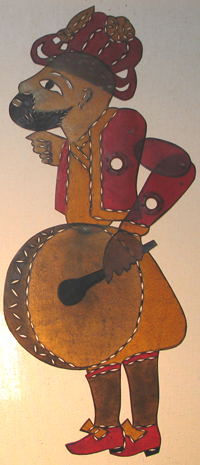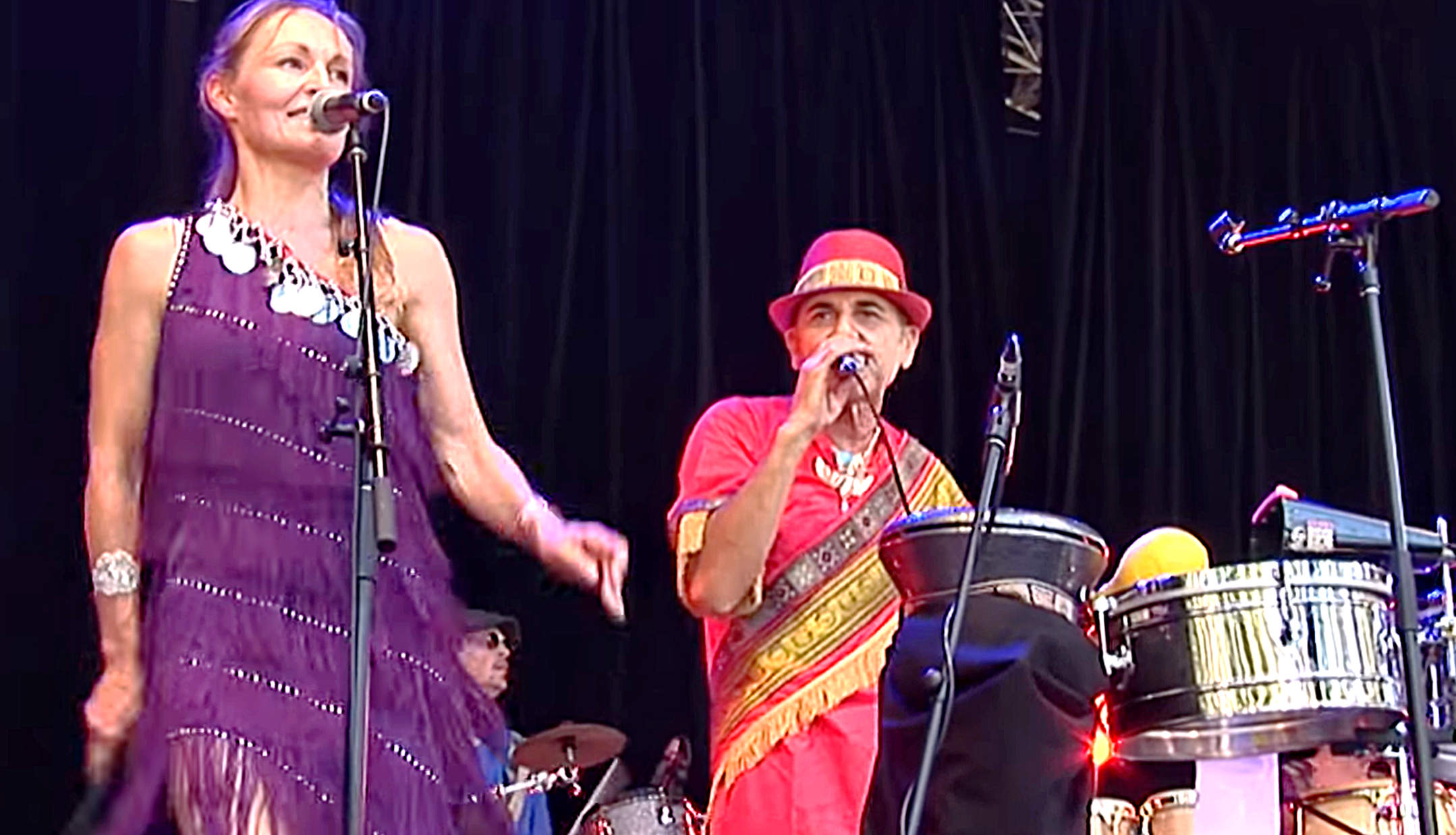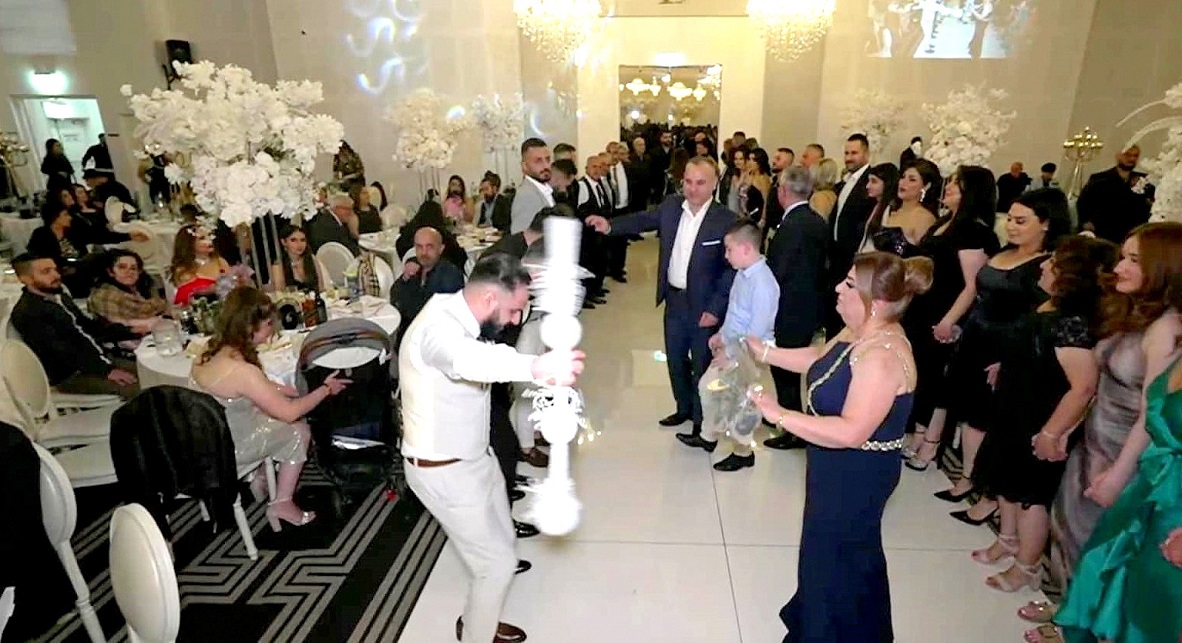|
Tapan (drum)
The davul, dhol, tapan, atabal or tabl is a large double-headed drum that is played with mallets. It has many names depending on the country and region. These drums are commonly used in the music of the Middle East and the Balkans. These drums have both a deep bass sound and a thin treble sound due to their construction and playing style, where different heads and sticks are used to produce different sounds on the same drum. Names Some names of davuls include: *''dhol'' () *''dawola/tabla'' () *'' dohol'' () *''doli'' ( ka, დოლი doli) *''davul'' () *''dahol'' (, ) *''davil'' () *''davula'' ( Sinhala: දවුල) *''tupan'' ( Goranian: tupan) *''daul'', ''tǎpan'', ''tupan'' () *''goč'', ''tapan'', ''tupan'' () *''tapan, tupan'' () *''tobă/dobă'' () *''tabl'' ( or ''tabl baladi'') *''tof'' () *''taoul(in)'' () *''lodra'', ''tupana'', ''daulle'', ''taborre'' () *''moldvai dob'' () Other Greek names for this drum include Davouli, Argano, Toskani, Tsokani, Toubi, ... [...More Info...] [...Related Items...] OR: [Wikipedia] [Google] [Baidu] |
Percussion Instrument
A percussion instrument is a musical instrument that is sounded by being struck or scraped by a percussion mallet, beater including attached or enclosed beaters or Rattle (percussion beater), rattles struck, scraped or rubbed by hand or struck against another similar instrument. Excluding Zoomusicology, zoomusicological instruments and the human voice, the percussion family is believed to include the oldest musical instruments.''The Oxford Companion to Music'', 10th edition, p.775, In spite of being a very common term to designate instruments, and to relate them to their players, the percussionists, percussion is not a systematic classificatory category of instruments, as described by the scientific field of organology. It is shown below that percussion instruments may belong to the organological classes of idiophone, membranophone, aerophone and String instrument, chordophone. The percussion section of an orchestra most commonly contains instruments such as the timpani, ... [...More Info...] [...Related Items...] OR: [Wikipedia] [Google] [Baidu] |
Zurna
The zurna is a double reed wind instrument played in Central Asia, West Asia, the Caucasus, Southeast Europe and parts of North Africa. It is also used in Sri Lanka. It is usually accompanied by a davul (bass drum) in Armenian, Anatolian and Assyrian folk music. The zurna is largely played in Turkey. Etymology and terminology A folk etymology explains that the name is derived from Persian "" (''surnāy''), composed of "" (''sūr'') meaning "banquet, feast", and (''nāy'') meaning "reed, pipe". The term is attested in the oldest Turkic records, as "''suruna''" in the 12th and 13th century Codex Cumanicus (CCM fol. 45a). Zurna has also been suggested as a possible borrowing from Hittite or Luwian into the Armenian language, where Arm. զուռնա ''zuṙna'' is compared to Luwian ''zurni'' "horn". Origins The zurna was said to originate from Central Asia and ancient Asia Minor (Anatolia). Images of the zurna are visible in stone reliefs and artwork by the Hittites, who wer ... [...More Info...] [...Related Items...] OR: [Wikipedia] [Google] [Baidu] |
Kamancheh
The kamancheh (also kamānche or kamāncha) (, , , ) is an Iranian bowed string instrument used in Persian, Azerbaijani, Armenian, Kurdish, Georgian, Turkmen, and Uzbek music with slight variations in the structure of the instrument. The kamancheh is related to the rebab which is the historical ancestor of the kamancheh and the bowed Byzantine lyra. The strings are played with a variable-tension bow. In 2017, the art of crafting and playing with Kamantcheh/Kamancha was included into the UNESCO Intangible Cultural Heritage Lists of Azerbaijan and Iran. Name and etymology The word "kamancheh" means "little bow" in Persian (''kæman'', bow, and ''-cheh'', diminutive). The Turkish word kemençe is borrowed from Persian, with the pronunciation adapted to Turkish phonology. It also denotes a bowed string instrument, but the Turkish version differs significantly in structure and sound from the Persian kamancheh. There is also an instrument called ''kabak kemane'' lite ... [...More Info...] [...Related Items...] OR: [Wikipedia] [Google] [Baidu] |
Parkapzuk
The ''parkapzuk'' () is a droneless, horn-belled bagpipe played in Armenia. The double-chanters each have five or six finger-holes, but the chanters are tuned slightly apart, giving a " beat" as the soundwaves of each interfere, resulting in a penetrating tone. Researchers in 1996 and 1997 noted they recorded one of the last active pipers of that time. The Parkapzuk is made of sheep or lamb skin, which has been gutted and hardened. The size of the 'bag', depends on the player's comfortable size. The pipes are made of wood. Wood was the original material, preferably wood from an apricot tree, but today some of the pipes have been made of plastic, as it is cheaper and less difficult to make. Some sources indicate that the ''parkapzuk'' is single chantered, while others indicate it is double-chantered like the ''tulum Tulum (, ) is the site of a pre-Columbian Mayan walled city which served as a major port for Coba, in the Mexican state of Quintana Roo. The ruins are situate ... [...More Info...] [...Related Items...] OR: [Wikipedia] [Google] [Baidu] |
Shvi
The shvi (, "whistle", pronounced ''sh-vee'') is an Armenian fipple flute with a labium mouth piece. Commonly made of wood (apricot, boxwood, or ebony) or bamboo and up to in length, it typically has a range of an octave and a-half. The ''tav shvi'' is made from apricot wood, it is up to long, and is tuned 1/4 lower producing a more lyrical and intimate sound. The shvi is up to 12 inches in length and is made of reed, bark of willows, or walnut wood. It has 8 holes on the front, 7 of which are used while playing, and one thumbhole. One octave is obtained by blowing normally into the shvi and a second octave is attained by blowing with slightly more force (i.e., overblowing). The lower octave has a timbre similar to a recorder whereas the higher octave sounds similar to a piccolo or flute. 8-hole traditional flute. The shvi is played with the mouth. Typically, most Armenian duduk or zurna players learn the shvi before moving on to either instrument. See also * Salamuri * ... [...More Info...] [...Related Items...] OR: [Wikipedia] [Google] [Baidu] |
Sring
The sring (, also transliterated as ) is a shepherd's flute originating in Armenia. Sring is also the common term for end-blown flutes in general. These flutes are made either of a stork bone, bamboo, wood from the apricot tree or cane and have or eight finger holes, producing a diatonic scale. The Armenian Armenian may refer to: * Something of, from, or related to Armenia, a country in the South Caucasus region of Eurasia * Armenians, the national people of Armenia, or people of Armenian descent ** Armenian diaspora, Armenian communities around the ... musicologist Komitas believed that the sring was the most characteristic among the Armenian instruments. Blul The ' instrument is a particular variety of the sring family of flutes. It is often considered a modern evolution of the medieval sring, with the primary differences being the presence of ring-shaped zones, both ends being thickened, and the resulting sound being characterized as velvety and slightly muted. Reference ... [...More Info...] [...Related Items...] OR: [Wikipedia] [Google] [Baidu] |
Duduk
The duduk ( ; ) or tsiranapogh (, meaning "apricot-made wind instrument"), is a double reed woodwind instrument made of apricot wood originating from Armenia. Variations of the Armenian duduk appear throughout the Caucasus, the Balkans, and the Middle East, including Bulgaria, Azerbaijan, Georgia (country), Georgia, Kurdistan, Turkey, and Iran. Duduk, Balaban (instrument), Balaban, and Mey (instrument), Mey are almost identical, except for historical and geographical differences. It is commonly played in pairs: while the first player plays the melody, the second plays a steady drone called ''dum'', and the sound of the two instruments together creates a richer, more haunting sound. The unflattened reed and cylindrical body produce a sound closer to the English horn than the oboe or bassoon. Unlike other double reed instruments like the oboe or shawm, the duduk has a very large reed proportional to its size. UNESCO proclaimed the Armenian duduk and its music as a Masterpieces of ... [...More Info...] [...Related Items...] OR: [Wikipedia] [Google] [Baidu] |
Goblet Drum
The goblet drum (also chalice drum, tarabuka, tarabaki, darbuka, darabuka, derbake, debuka, doumbek, dumbec, dumbeg, dumbelek, toumperleki, tumbak, or zerbaghali; / Romanized: ) is a single-head membranophone with a goblet-shaped body. It is most commonly used in the traditional music of Egypt, where it is considered the national symbol of Egyptian Shaabi Music. The instrument is also featured in traditional music from West Asia, North Africa, South Asia, and Eastern Europe. The West African djembe is also a goblet membranophone. This article focuses on the Middle Eastern and North African goblet drum. History The origin of the term ''Darbuka'' lies in the rural Egyptian Arabic slang word that changed "darb" meaning "to strike" into "darabuka". Goblet drums have been around for thousands of years and were used in Mesopotamian and Ancient Egyptian cultures. They were also seen in Babylonia and Sumer from as early as 1100 BCE. On Sulawesi, large goblet drums are used as temple ... [...More Info...] [...Related Items...] OR: [Wikipedia] [Google] [Baidu] |
Assyrian People
Assyrians (, ) are an ethnic group Indigenous peoples, indigenous to Mesopotamia, a geographical region in West Asia. Modern Assyrians Assyrian continuity, share descent directly from the ancient Assyrians, one of the key civilizations of Mesopotamia. While they are distinct from other Mesopotamian groups, such as the Babylonians, they share in the broader cultural heritage of the Mesopotamian region. Modern Assyrians may culturally self-identify as Terms for Syriac Christians#Syriac identity, Syriacs, Chaldean Catholics, Chaldeans, or Terms for Syriac Christians#Aramean identity, Arameans for religious, geographic, and tribal identification. Assyrians speak various dialects of Neo-Aramaic, specifically those known as Suret and Turoyo, which are among the oldest continuously spoken and written languages in the world. Aramaic was the lingua franca of West Asia for centuries and was the language spoken by historical Jesus, Jesus. It has influenced other languages such as Hebrew an ... [...More Info...] [...Related Items...] OR: [Wikipedia] [Google] [Baidu] |
Assyrian Folk/pop Music
Assyrian folk/pop music, also known as Assyrian folk-pop, is the musical style of the Assyrian people derived from traditional music that includes a broad range of stylistic varieties, which would also encompass fusions of Western genres such as pop, electronic, Latin, jazz and/or classical music, with a melodic basis of Assyrian folk. Background Assyrian folk music claims to be the descendant of the music of their ancient Upper Mesopotamian ancestors that has survived in the liturgical music of the Syriac Churches. Assyrian songs are generally sung in Iraqi Koine, a standard variety of Assyrian Neo-Aramaic. However, older songs mostly had an Urmian dialect and tribal-folk music tend to contain Tyari dialects. Themes tend to focus on longing, melancholy, strife and love issues. Assyrian songs are usually lengthy, tending to be around 5 minutes long on average. Composition Assyrian folk can also be found in traditional Middle Eastern makams, and it has similarities to other ... [...More Info...] [...Related Items...] OR: [Wikipedia] [Google] [Baidu] |
Assyrian Folk Dance
Assyrian folk dances are sets of dances that are performed throughout the world by Assyrians, mostly on occasions such as weddings, community parties and other jubilant events. Assyrian folk dances are mainly made up of circle dances like ballet that are performed in a line, which may be straight, curved, or both. Most of the dances allow unlimited number of participants, with the exception of the ''Sabre Dance'', which require three at most. Assyrian dances would vary from weak to strong, depending on the mood and tempo of a song. Assyrian folk dances belong to five metric groups: (10 dances), (6 dances), (13 dances), (1 dance), (1 dance). The tempo would usually range from slow (70 beats per minute) to very fast (140 beats). Technique All Assyrian dances, with the exception of the ''Sabre Dance'', are done in a connected circle. Most Assyrian circle dances are lateral, vining and open-ended, where more and more participants can join the dance. In an open floor space, t ... [...More Info...] [...Related Items...] OR: [Wikipedia] [Google] [Baidu] |






